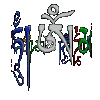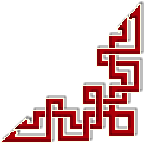 |
|
|
|

| The Art
of Happiness is read like an enchanting Indian tale by Howard Cutler and
Ernest Abuba. Gyatso, His Holiness the Fourteenth Dalai Lama, is the
spiritual and temporal leader of the Tibetan people. Cutler helps to blend
psychology with the Dalai Lamas Buddhist meditations and stories. Gyatso
talks about how to defeat depression, anxiety, anger, and jealousy through
meditation. He discusses relationships, health, family, work, and
spirituality and how to find inner peace while facing these struggles. His
tireless efforts on behalf of human rights and world peace have brought him
international recognition. He is the recipient of the Wallenberg Award
(conferred by the U.S. Congressional Human Rights Foundation), the Albert
Schweitzer Award, and the Nobel Peace Prize. Recommended for world religion
collections. Ravonne A. Green, Virginia Polytechnic Inst. & State Univ.,
Blacksburg
Read more |
||

| The
Dalai Lama teaches with clear and forceful language. These teachings form an
essential spiritual discourse.--Publishers Weekly Winner of the 1989 Nobel Peace Prize, the Dalai Lama discusses the subject of patience, drawing on a chapter from an important Buddhist classic, Shantideva's "Guide to the Bodhisattva's Way of Life." He helps readers examine how anger arises to destroy much that is positive and good, proposing that gentleness is fundamental to human nature. Through active self-discipline, and not meekness as is commonly misunderstood, we can transform anger through compassion and to be reconciled with ourselves and others. Recommended for public libraries. Read more |
||

| These
videos are a documentary of teachings on The Four Noble Truths presented by
H.H. the Dalai Lama at Barbicon Hall in London, with a translator on hand to
help act as a go-between in the exchange. The Dalai Lama, as just about all
Buddhist masters would agree, feels that The Four Noble Truths are the core
of all of Buddhism. They are:
1. We suffer, not only active anguish but wide-ranging dissatisfaction and unease. 2. The origin of this suffer is our clinging, desire and attachments. 3. There is an End to suffering. 4. That pathway out of suffering is the Eightfold Path. Robert Thurman, America's
foremost scholar on Tibetan Buddhism at Columbia University, introduces the
Four Noble Truths here. The Dalai Lama strikes a chord within all of us on
this film with his succinct marking out of the Buddhist path of freedom,
self-control, and compassion. I offer you a short review because of course
the Dalai Lama will explain it all for you! Enjoy.
Read more |
||
 |
If you
could sit down with The Dalai Lama and talk with him about anything, what
would you discuss? Fabien Ouaki , a prominent French businessman, was
granted such an opportunity and asked The Dalai Lama what he thinks about
the everyday issues that fill our newspapers and lives.
Read more
|
||

| The
Dalai Lama never shies away from the big questions. The Meaning of Life is a
collection of lectures given in London in 1984 on the Buddhist worldview,
before he had won the Nobel Peace Prize or become a bestselling author in
English. Still, his message is essentially the same: practice nonviolence,
cultivate altruism, and transform consciousness. In these lectures, the
Dalai Lama begins with a painting of the wheel of cyclic existence,
depicting the levels of karmic existence and symbols of the 12 links of
dependent-arising. In other words, this painting, presented in seven color
plates, is a visual summation of the basic tenets of Buddhism. The Dalai
Lama draws on the painting to explain the 12 links of dependent-arising and
then the path that leads to liberation from them. A nuts and bolts book,
readers will enjoy it for its detail and for the broad range of questions
elicited in listeners. --Brian Bruya
Read more |
||

| For the
last forty years, the Tibetan government has been exiled in India. In 1959
the new Communist Chinese government forced the non-violent Tibetan Buddhist
government, lead by the fourteenth Dalai Lama, Tenzin Gyatso, to flee the
land in preparation to overtake the Tibetan people. In his years in exile
the Dalai Lama has written literature on the Tibetan Buddhist way of life,
not only to attract the Buddhist population but the world's religions. This
life is one of clarity, love, and good deeds. Path to Enlightenment, which
is a commentary on the third Dalai Lama's Essence of Refined Gold, gives
spiritual advice through the eyes of Buddhist over a span of many years,
defining the life of a Tibetan Buddhist. The writing of Tenzin Gyatso and
Sonam Gyatso together is showing us Buddha's principal on the path to
enlightenment. Along with defining the Lam Rim, which are the stages on the
spiritual path. His holiness described the difficulty of attaining
Nirvana (full Buddhahood), but urges determination. Path to Enlightenment
makes one aware of the steps that must be taken in advance for the true
inner peace., while giving up the expectation of a quick fix to a problem.
The Dalai Lama explains how to cultivate a person's own meditative
concentration, to give the mind a clear state. A person has to train their
mind to discipline themselves, but enlightenment is feasible by any human
being.
Read more |
||

| If
you've never read a book by the Dali Lama this is certainly an exceptional
book to introduce you to the man and to the Buddhist philosophy of life. In
this book the Dali Lama shares with you the writings that were most
influential and inspirational in forming his philosophy of life. The book
has changed how I look at, and live, my life. I highly recommend this book
to both people new to Buddhist philosophy, and those seeking a deeper
understanding of how to improve their lives through living a more spiritual
life.
Read more |
||

|
|
||

|
His
Holiness the Dalai Lama's teachings--a beautiful and
accessible presentation of the time-honored path to
enlightenment--are one of the world's great spiritual
treasures.
The Joy of Living and Dying in Peace is the third volume in the landmark Literacy of Tibet series. Bringing us closer to the essence of Buddhist teachings, and to his own peerless insight, the Dala Lama offers his thoughts on achieving a meaningful life and death. At the heart of his eloquent presentation is this lesson: by cultivating compassion, wisdom, and positive thought and action--in short, by living a good life--we can approach death without fear or regret, and welcome our passage and rebirth. Read more |
||
 |
Essential Teachings: His Holiness the Dalai Lama |
||

|
In their 1998 book
The Art of Happiness: A Handbook for Living,
His Holiness the Dalai Lama and co-author Howard C. Cutler, M.D., explored
how inner development contributes to overall happiness. In their second
collaboration, the authors considered how they could best follow their
highly successful first book. They chose a subject that affects millions of
people around the world and produced. In this very readable, useful book,
the authors attempt to discover the following: "Where does work fit in to
our overall quest for happiness?" and "To what degree does work satisfaction
affect our overall life satisfaction and happiness?"
The Art of Happiness at Work is a modern-day Socratic dialogue in which Cutler asks the Dalai Lama about the difficulties and rewards we might encounter in the workplace. The authors explore issues such as work and identity, making money, the Buddhist concept of "right livelihood," and transforming dissatisfaction at work. The discussion appears simple, if not obvious, at first, but upon closer scrutiny, the Dalai Lama's profound wisdom and sensitivity emerges. For the Dalai Lama, basic human values such as kindness, tolerance, compassion, honesty, and forgiveness are the source of human happiness. Throughout the book, he illustrates with clear examples how bringing those qualities to bear on work-related challenges can help us tolerate or overcome the most thorny situations. Recognizing that not all problems can be solved, the Dalai Lama provides very sound advice. The authors urge balance and self-awareness and wisely state, "No matter how satisfying our work is, it is a mistake to rely on work as our only source of satisfaction." --Silvana Tropea Read more
|
||

| A
wonderful companion book to the Dalai Lama's "Transforming the Mind." I keep
this little book (be prepared: it's only about 4" square!) on my computer at
work and refer to it in times of stress (about every half hour).
"The Book of Transformation" has actually taken the most important concepts of "Transforming the Mind" and put them here. I think it's a great idea, especially if you are like me and enjoy going back and re-reading certain sections. I'd recommend reading
"Transforming the Mind" first, then keeping this little book with you at all
times! It will constantly remind you that generating compassion for all
living beings is a wonderful way to bring true joy into your own life, as
well as spreading joy everywhere you go. The world could learn a lot from
this Nobel Peace Price recipient. |
||

|
|
||

| The
packaging of talks given by the Dalai Lama has become a publishing staple in
the last decade. Here the Dalai Lama's student Singh, a university professor
in India, has pulled together six talks delivered in New Delhi from
1988-1997. "In order to practice Buddhism, you have to first know about the
mind," begins this labyrinthine journey that is ostensibly aimed at all
people, not just Buddhist practitioners. The lectures are good examples of
how the Dalai Lama must be supremely accessible in thought and speech, and
yet must also articulate the more abstract philosophical underpinnings of
Buddhism as a "science of the mind." Within each chapter both aspects are in
evidence. For example, in "A Journey to Happiness" we read the clear
directive, "Some people feel that compassion, love and forgiveness are
religious matters. This is wrong. Love and compassion are imperative. There
is no way we can ignore these things, whether one is a believer or not."
Near the end of the same chapter the thinking takes one of its abstruse
turns: "In Maha-Anuttara Yoga Tantrayana, one unique practice is making a
distinction among the gross, subtle, and innermost subtle levels of mind."
The book's ultimate message of happiness through compassion is a vital one,
but this collection is geared for the adept with a philosophical appetite
and a considerable intellect, not for the general reader.
Read more |
||

| I've
read a few books by His Holiness the Dalai Lama so far and honestly I've
struggled through all of them.
The Dalai Lama's Book Of Wisdom is the best one I`ve read to date. It's the easiest to read as well as being very simple and at the same time deep in it's content. It's divided into 4 short wonderful sections: Contentment, Joy and Living Well It's one of those books that you can keep by your night table or in your meditation area or wherever and take a look at it every so often. The cover is so warm, inviting and peaceful that I might just have to get another copy, cut the cover out and frame it. Read more |
||

| This
book is for anyone who wants great insight into Tibetan Buddhism. For those
who were disappointed with introduction books to Buddhism, H.H. Dalai Lama
gets in depth into the paths, teachings, and practices in Buddhism. It is a
very detailed book and teaches Buddhism in depth and not in an overview
fashion. Very insightful and I was able to learn a vast amount of knowledge
from reading this book. H.H. Dalai Lama, I feel is an amazing writer and is
a source of compassion and knowledge for anyone. If you would like to know
more about Buddhism than just an overview and ways to cultivate the wisdom
inside of you, I would say this is the book for you.
Read more |
||

| Having
read with great interest a lot of the Dalai Lama's other books, I found this
one easily the most compelling. The language is simple and direct which has
the effect of making some very complex ideas easy to understand. The Dalai
Lama emerges as someone with a thorogoing understanding of human nature. But
whereas his image is generally of someone who is limitlessly patient and
benign, in this book he clearly shows that he has both depth and edge.
The Dalai Lama makes a very clear connection between human happiness and what he calls inner discipline. He also makes clear that it is not really meaningful to speak of compassion except in the context of self-restraint. This shows that Buddhism is much more than the feel-good religion it is sometimes taken for in the west. It also shows that Buddhist ethical thinking is much closer to traditional Judeao-Christian and even Catholic social teaching than one might suppose. In fact when this is taken on board it becomes much easier to understand the Dalai Lama's near insistence that people stick to the religious tradition of their own culture. One of the most remarkable things about this book is his assertion that each of the major faith traditions are effective means of attaining human happiness. Stranger still for a major religious leader is his statement that, although religion is helpful, it is not actually essential if we are to be happy. What is essential is that we develop what he calls our basic human qualities. The first of these are love and compassion, but he also talks a lot about patience, tolerance, generosity and humility - each of which presuppose a degree of self discipline. It is tempting to write the Dalai Lama off as an oddity - especially given the way he seems all too ready to cosy up to celebrities. But reading this book, you begin to get the feeling that there really is something going on inside his head. In none of his other books have I been able to detect the intelligence, the cogence and the incisiveness that is so obvious even through the sometimes mangled translations when you see him in the flesh. As a would-be Catholic I can also say that the Dalai Lama's spiritual teachings are as relevant as any from within my own tradition. Is there any way the Pope could make him a Cardinal!? Read more |
||



